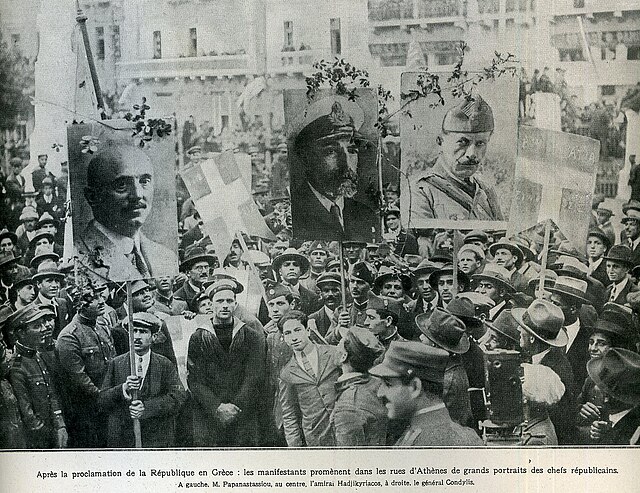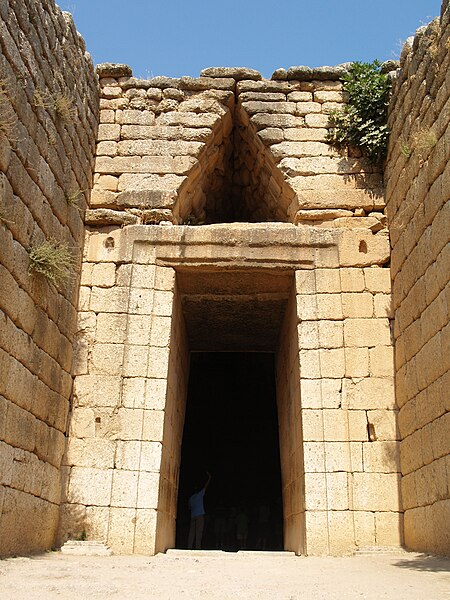The Second Hellenic Republic is a modern historiographical term used to refer to the Greek state during a period of republican governance between 1924 and 1935. To its contemporaries it was known officially as the Hellenic Republic or more commonly as Greece. It occupied virtually the coterminous territory of modern Greece and bordered Albania, Yugoslavia, Bulgaria, Turkey and the Italian Aegean Islands. The term Second Republic is used to differentiate it from the First and Third republics.
General Nikolaos Plastiras, leader of the 1922 Revolution, gives the power to the politicians (1924)
Proclamation of the Second Hellenic Republic with crowds holding placards depicting Alexandros Papanastasiou, Georgios Kondylis and Alexandros Hatzikyriakos
British cartoon depicting the Greco-Bulgarian war incident of 1925 with the League of Nations intervening
Papanastasiou cabinet, 1932
Greece, officially the Hellenic Republic, is a country in Southeast Europe. Located on the southern tip of the Balkan peninsula, Greece shares land borders with Albania to the northwest, North Macedonia and Bulgaria to the north, and Turkey to the east. The Aegean Sea lies to the east of the mainland, the Ionian Sea to the west, and the Sea of Crete and the Mediterranean Sea to the south. Greece has the longest coastline on the Mediterranean Basin, featuring thousands of islands. The country comprises nine traditional geographic regions, and has a population of nearly 10.4 million. Athens is the nation's capital and largest city, followed by Thessaloniki and Patras.
The entrance of the Treasury of Atreus (13th century BC) in Mycenae
The Parthenon on the Acropolis of Athens, icon of classical Greece
The Antikythera mechanism (c. 100 BC) is considered to be the first known mechanical analog computer (National Archaeological Museum, Athens).
The Odeon of Herodes Atticus in Athens, built in 161 AD








